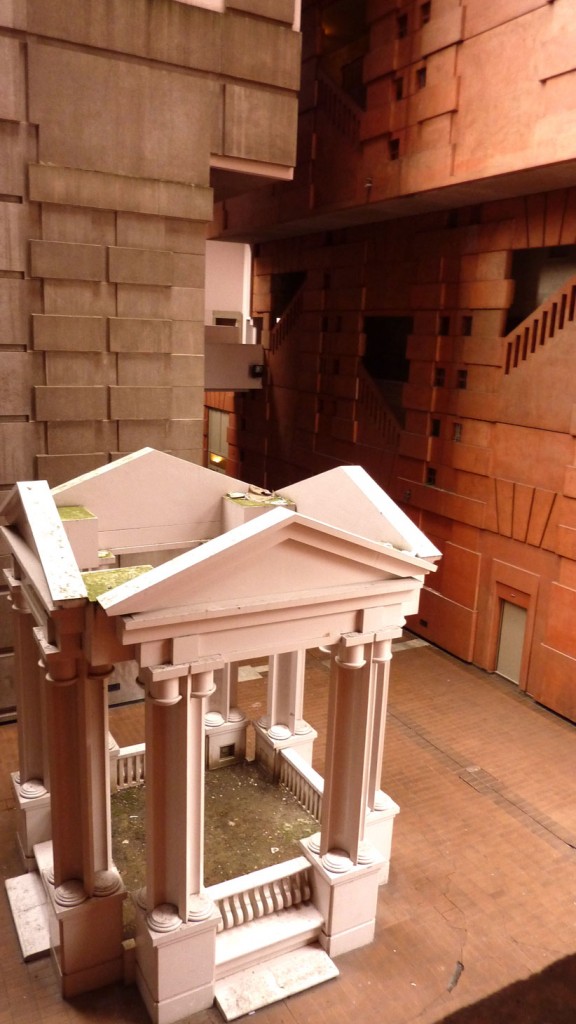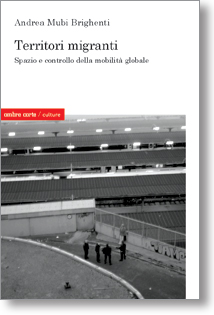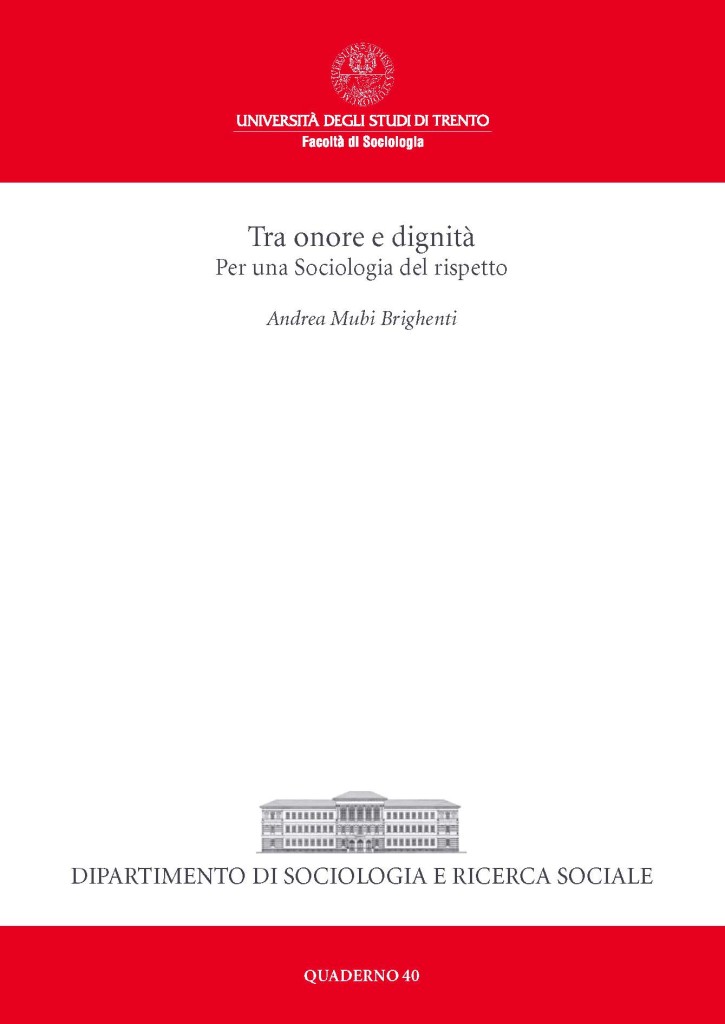All posts by admin
Periferie italiane
L’interesse per il tema delle periferie urbane – oggi variamente ribattezzate
«città abbandonata», «città negata», «città senza città», «quartieri sensibili» o altro – che è fiorito in anni recenti nella sociologia italiana può essere letto in modo ambivalente. Da un lato infatti esso corre dei rischi, dall’altro offre però delle importanti possibilità. I rischi sono legati al fatto che l’agenda degli interessi della ricerca sociale venga dettata dai mass media e dalle priorità di questi ultimi. Nel momento in cui i media sollevano a gran voce i temi della sicurezza urbana, agitano lo spettro dei quartieri-ghetto e dipingono le periferie come il ricettacolo di tutti i cancri sociali del paese, la ricerca sociale è in un certo senso forzata a correre a verificare, ma l’operazione corre sempre il rischio di finire per adottare e più o meno inconsciamente avallare e legittimare tutta una serie di retoriche e parole d’ordine di stampo politico-mediatico. Come cantava Battiato, non è facile restare calmi e indifferenti mentre tutti intorno fanno rumore. Dall’altro, in positivo, una serie di possibilità sono aperte da quelle ricerche, di cui vorrei parlare in questo breve testo, che hanno prodotto dei risultati interessanti e soprattutto hanno saputo difendere la specificità epistemica e, non da ultimo, la temporalità propria della ricerca sociale – una temporalità che per sua costituzione dovrebbe contrapporsi ai ritmi fibrillanti, ai riflessi condizionati del pensiero e alla mancanza di memoria a lungo termine che caratterizza i mass media.
.
Una discussione sui seguenti libri:
Caritas Italiana – Mauro Magatti (a cura di), La città abbandonata: dove sono e come cambiano le periferie italiane, Bologna, Il Mulino, 2007.
Paola Briata, Massimo Bricocoli e Carla Tedesco, Città in periferia: politiche urbane e progetti locali in Francia, Gran Bretagna e Italia, Roma, Carocci, 2009.
Franco Ferrarotti e Maria I. Macioti, Periferie: da problema a risorsa, Roma, Teti, 2009.
Antida Gazzola, Intorno alla città: problemi delle periferie in Europa e in Italia, Napoli, Liguori, 2008.
Laura Bovone e Lucia Ruggerone (a cura di), Quartieri in bilico: periferie
milanesi a confronto, Milano, Mondadori, 2009.
Explorando os interstícios urbanos
(with Ricardo Campos) (eds.) Special Issue of Forum sociológico, no. 18
http://forumsociologico.fcsh.unl.pt/Detalhes.aspx?ID=Ed18art01.html.html
https://sociologico.revues.org/76
Pdf here : introducao
Visibility in Social Theory and Social Research
Lines, barred lines. Movement, territory and the law
International Journal of Law in Context, 6,3 pp. 217–227 (2010) Cambridge University Press
.
In this paper an attempt is made to analyse the complex relationship between law, territory and movement. Beginning with a quick overview of the notion of property, the paper suggests that this legal notion represents a way of imagining the practice of inhabiting the planet. Dwelling and travelling are explored as two alternative and complementary ways of inhabiting, and a closer inspection is paid to the moments when they confront each other both ideologically and practically. A territorial question is identified at the core of law, namely the issue of the movement of bodies in space (or motility), together with the control of such movements. From this perspective, movement is not simply one among the many objects over which law exerts control, rather law itself is a territorial endeavour, a movement that acts upon other movements.
At the Wall: Graffiti Writers, Urban Territoriality, and the Public Domain
Space and Culture, Vol. 13(3): 315-332, July 2010
http://sac.sagepub.com/content/13/3/315
.
The article is based on an ethnographic observation of a crew of graffiti writers in the northeast of Italy. Extending some considerations emerging from the case study, the article advances a reflection on the territorial dimension of graffiti writing in urban environments and the relationship between walls, social relationships and the public domain. This task entails understanding walls as artefacts that are subject to both strategic and tactical uses, as well as the relationship between walls and the public domain as a territorial configuration. In particular, graffiti writing is observed as an interstitial practice that creates its own specific way of using walls: it is a “longitudinal” rather than a “perpendicular” style, which transform the wall into a fragment of a “prolongable” series, a part of a continuing conversation.
Artveillance: At the Crossroads of Art and Surveillance
Surveillance & Society, Vol 7, No 2 (2010)
http://library.queensu.ca/ojs/index.php/surveillance-and-society/article/view/artveillance
.
.
The Publicness of Public Space
On Territorology. Towards a General Science of Territory
Theory, Culture & Society, Vol. 27(1): 52–72, March 2010
http://tcs.sagepub.com/cgi/content/abstract/27/1/52
.
The development of territorology requires the overcoming of the dichotomy
between determinist and constructivist approaches, in order to advance
towards a general science of territory and territorial phenomena. Insights
for this task can come from at least four main threads of research: biology,
zooethology and human ethology; human ecology, social psychology and
interactionism; human, political and legal geography; and philosophy. In
light of the insights derived from these traditions, the article aims to conceptualize
territorial components, technologies, movements, effects, and their
interplay, in order to establish the main lines of inquiry for territorology. A
general territorology, it is argued, amounts to a sociology of territorial acts
and relations, whose aim is to analyze the expressive and functional components
of territories, as fixed through their organizational and technological
devices.
Democracy and its visibilities
here – published in Haggerty, Kevin D. and Minas Samatas (eds.) Surveillance and Democracy. London: Routledge, pp. 51-68
SORVEGLIANZA E TEORIA SOCIALE
La sorveglianza può essere definita sinteticamente come l’attività
che consiste nel tenere sotto osservazione un insieme di
soggetti o una popolazione attraverso un’attenzione focalizzata
su corpi, dati e dettagli personali, che vengono sistematicamente
monitorati, registrati, controllati, archiviati, consultati e confrontati
(Lyon 2002; 2007). Tale attività può essere condotta in
una molteplicità di luoghi sociali da organizzazioni di tipo
molto diverso (militari, di polizia, di intelligence, mediche, commerciali)
e per finalità altrettanto diverse (controllo dei propri
impiegati, controllo dei “clienti” – in senso ampio, tale che ad
esempio i devianti possono essere considerati come clienti delle
agenzie di controllo sociale).
In questo capitolo si vuole mostrare come tutti i processi di
sorveglianza possano essere concettualizzati quali forme di
manipolazione delle visibilità di attori e situazioni sociali. Tale
affermazione, occorre subito aggiungere, è valida solo se con
il termine di visibilità si intende un fenomeno definito non
solamente dalla dimensione visiva o visuale, bensì da un più
generale ambito di distribuzione selettiva delle attenzioni e
delle rilevanze all’interno di un campo sociale. In altri termini,
la visibilità può costituire un’importante categoria analitica nell’interpretazione
dei processi di sorveglianza, ma tale categoria
necessita anzitutto di essere articolata in modo accurato.
The Wall & The City
published by professionaldreamers, Trento, 2009 – ISBN 978-88-904295-0-7
Full text at | https://www.academia.edu/4093945/The_Wall_and_The_City_Ed_
Elias Canetti, Le voci del diritto
in Giuseppe Campesi, Ivan Pupolizio and Nicola Riva (Eds.) Diritto e teoria sociale. Roma: Carocci, pp. 297-318.
http://www.carocci.it/index.php?option=com_carocci&task=schedalibro&Itemid=72&isbn=9788843049271
Pour une territoriologie du droit
paru dans Patrick Forest (sous la direction de) Géographie du droit. Épistémologies, développements et perspectives. Québec: Presses de l’Université Laval, pp. 239-260.
Territori migranti
Spazio e controllo della mobilità globale
pp. 185, € 16,50, isbn 978-88-95366-39-5
http://www.ombrecorte.it/more.asp?id=195
Download full book in pdf : Brighenti 2009 Territori migranti
Revolution and Diavolution. What is the difference?
Critical Sociology, vol. 34(6): 787-802.
http://crs.sagepub.com/cgi/content/abstract/34/6/787
Tra onore e dignità: per una sociologia del rispetto
Brighenti, Andrea (2008) Tra onore e dignità: per una sociologia del rispetto. Quaderni del Dipartimento di Sociologia e Ricerca Sociale n. 40 . Università di Trento. ISBN ISSN: 1828 – 955 X
http://eprints.biblio.unitn.it/1480/
Visual, Visible, Ethnographic
The paper explores visibility as a category to describe certain characteristics of the social that can be observed by ethnographers. The field of visibility spans the most immediate interactions that take place in a situated context and mediated social relations. Visibility offers a useful comparative tool to research because very different practices can be compared as specific configurations or regimes of visibility. The effects of visibility are contingent upon the type of regime, as the cases of recognition, control, and spectacle illustrate. The paper does not seek to propose visibility as a catch-all term; rather, it suggests that ethnographic research is inevitably concerned with how features of visibility are employed by actors to introduce thresholds of relevance in the definition of relational territories. In its attempt to understand the constitution of social territories as ‘locales’, ethnography cross-cuts the distinction between the how and the why of observed phenomena.
Degustare vino
Did We Really Get Rid of Commands? Thoughts on a Theme from Elias Canetti
Neither in contemporary sociology nor in legal theory is much attention paid to the theoretical object of commands. This paper explores some features of commands that tend to remain largely invisible in social action, as well as largely under-theorized in the scholarly literature. The analysis draws on early reflection by Elias Canetti and tries to clarify the dynamics of the relationship between law and commands from a sociological perspective. The main claim is that command cannot be reduced to a linguistic entity, but has to be considered in the more complex frame of a direct relationship among subjects and their bodies within a shared space. Explanation of commands is made even more difficult by the fact that they take place in a space that is located ambiguously in between the realm of the subjective and that of the objective, in between passions and institutions.
https://link.springer.com/article/10.1007/s10978-006-0001-0













